JAMAICA
History

History
History
Pre-Columbian period
Not much is known about the original inhabitants of Jamaica. Archaeological excavations indicate that Jamaica was inhabited at least hundreds of years before the arrival of the Spanish in the early 16th century.
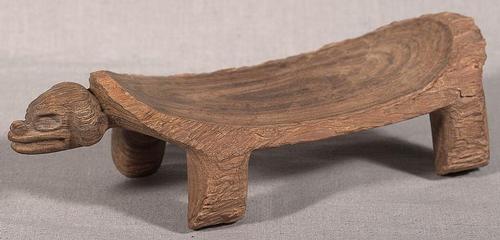
Taino Stool, JamaicaPhoto:Public domain
The residents that the Spaniards found in Jamaica were Taino, descendants of the Arawak Indians, who arrived in Jamaica around 700 from the South American mainland via the Lesser and Greater Antilles. These earliest inhabitants of the island soon introduced a certain structure in their society.
For example, the island was divided into a kind of provinces led by a "cacique", a chief. Decisions were made by him, but there were also self-governing villages.
The particularly dangerous cannibalistic Carib Indians never reached Jamaica, unlike many other Caribbean islands. Religion played a central role in the lives of the Arawak Indians. They idolized several gods, all of which had something to do with the weather or celestial bodies. The supreme god was Yocahú, the sun god.
Spanish rule
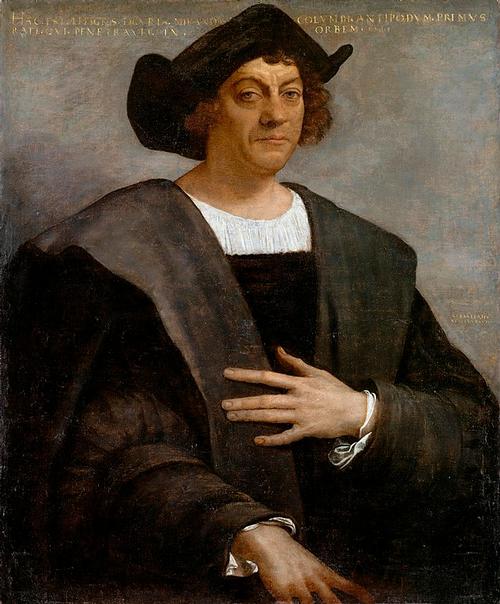 Christopher Columbus, JamaicaPhoto: Public domain
Christopher Columbus, JamaicaPhoto: Public domain
The arrival of the Spaniards would disturb the peace on the island. Most likely, Jamaica was discovered by Christopher Columbus on his second voyage of discovery to the new world. Dominica, Puerto Rico and Guadeloupe were also discovered during that trip. On his way back to Spain in 1494, he arrived in Jamaica via the south coast of Cuba. The hopes of finding large amounts of gold were soon over. He called the island Santiago. In 1503, Columbus visited Jamaica again on his fourth voyage. Because both ships of his expedition were wrecked off the coast of Jamaica, Columbus and his crew were forced to stay on the island under difficult conditions. Only over a year later in June 1504 were they found by a Spanish rescue mission and returned to Spain. Weakened and sick, Columbus died in Spain on May 20, 1506.
Jamaica was only placed under Spanish administration in 1509. Then they also built the first settlement, Sevilla Nueva. However, this settlement was not too favorable near a swamp, so this place was soon abandoned for a place on the south coast. This is where Villa de la Vega (now: Spanish Town) was founded, which was officially the capital of Jamaica from 1538 to 1872. Jamaica was Columbus's property at the time, and when he died in 1506, his son Diego inherited the island. Diego appointed one of his father's lieutenants as the island's first governor, Don Juan de Esquivel.
English rule
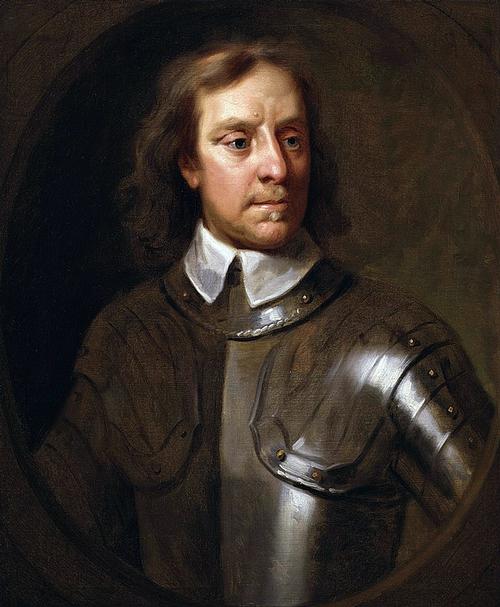 Oliver Cromwell, JamaicaPhoto: Public domain
Oliver Cromwell, JamaicaPhoto: Public domain
In 1654, English statesman Oliver Cromwell sent a fleet to the Caribbean to break the sovereignty of Spain there. However, the fleet, led by Admiral William Penn and General Robert Venables, was so ill-equipped and prepared for its task that they were severely weakened from the area near Hispaniola (now: Haiti and the Dominican Republic). To make something of it, the English sailed to sparsely populated and weakly defended Jamaica. On May 10, 1655, 38 ships with about 8,000 troops landed near the capital Villa de la Vega. The English could conquer the island without a fight. The Spaniards had gone north to travel to Cuba from there. The only opposition came from a small group of Spaniards who were left behind and slaves released by the Spaniards, so-called maroons or “cimarrons”. In 1658 reinforcements for the Spaniards came from Cuba, but after the lost battle at Rio Bueno, Jamaica finally fell into the hands of the English.
By 1656, some 1,600 English settlers had already arrived in the eastern part of Jamaica. Cromwell had promised them land and goods. Unfortunately, about three-quarters of the settlers died from tropical diseases. The island under military rule started to develop well economically. Lively trade developed between Jamaica, England and other Caribbean islands.
In England, meanwhile, the battle between anti-royalist Cromwell and supporters of the monarchy raged. This battle also started in Jamaica, but a mutiny among the troops was soon suppressed by the English commander, Colonel Edward d'Oyley. In 1661, the monarchy in England was restored and King Charles II appointed D'Oyley as governor. During the rest of the 17th century, more and more settlers came to Jamaica, attracted by the prosperous economic developments.
Buccaneers
The 17th century was also dominated by the buccaneers, initially hired by the English to defend the Caribbean against the French and the Dutch, with which England was constantly at odds. The buccaneers had a perfect location for a base in Jamaica. At one point, these buccaneers developed into a motley crew of pirates and adventurers who settled on the island of Tortuga northwest of Hispaniola, where there was a lively trade with passing ships. However, the Spaniards felt threatened and drove the buccaneers to the island of Tortola. The hunted buccaneers then united in the “Confederacy of the Brethren of the Coast”.
They gradually conquered more and more Spanish ships and developed as a relentless power, feared all over the Caribbean. Jamaica's new governor Sir Thomas Modyford, along with the Spaniards, sought to curtail the power of the buccaneers. However, when war against Holland and England broke out, Modyford attempted to make an alliance with the “Brethren” to defend the island from the Spaniards. The buccaneers agreed and settled en masse in Port Royal and Kingston Harbor. Port Royal quickly became the largest city in Jamaica with more whore lockers and bars than anywhere else in the world.Photo
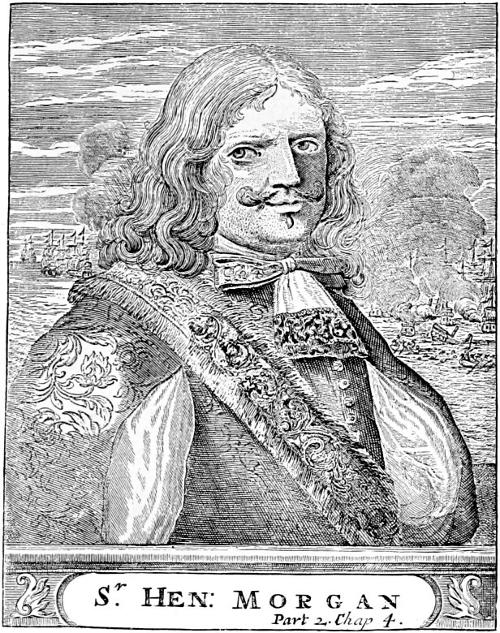 Henry Morgan JamaicaPhoto: Public domain
Henry Morgan JamaicaPhoto: Public domain
Young Welshman Henry Morgan took charge of the buccaneers. They lived among Spanish cities across the Caribbean. They had just attacked Panama, the major city of the Spaniards in the New World, when Spain and England made peace. Morgan was still tried in England for this, but was acquitted and even became governor of Jamaica. He died in 1688.
Both countries now regarded the buccaneers as a bunch of ordinary pirates who were forced to return to sea after a major earthquake in Jamaica. Most of Port Royal had disappeared into the sea, killing more than 2,000 residents.
War in Europe and slave rebellions
In the late 17th century, a French invasion force commanded by Admiral Jean du Casse landed in Jamaica. The colonists defended themselves vigorously and expelled the French despite many casualties and great material damage. The war ended with the signing of the Treaty of Rijswijck in September 1697. In the early 18th century, Jamaica also experienced the consequences of the war in which England and Holland faced France and Spain. For example, there was a six-day sea battle between the French fleet commanded by Jean du Casse and that of Admiral John Benbow, which ended undecided.
The war, fought mainly in Europe, was ended with the Treaty of Utrecht in 1713. It was agreed that England could supply slaves to the Spanish territories in the New World, making Jamaica the center of the slave trade in the Caribbean. Still, Jamaica was not doing very well. There were constant financial problems with the British crown and conflicts with the Maroons. Epidemics and natural disasters also ravaged the island. In addition, man was bothered by the increasing piracy in which ships were attacked and plantations looted. Some well-known pirates of the time were Nicholas Brown (Great Pirate), Edward Teach (Blackbeard), and Jack Rackham (Calico Jack).
In 1739 another war broke out between Great Britain, Spain and France as a result of an argument about illegal trade. The British suffered heavy losses and lost about 20,000 men. In 1748, another peace treaty (Aix-la-Chapelle) was signed, which ended in 1756 with the outbreak of the Seven Years' War between old rivals France and England. The British managed to conquer almost all French islands in a few years. This war was also concluded with a treaty, now that of Paris in 1763.
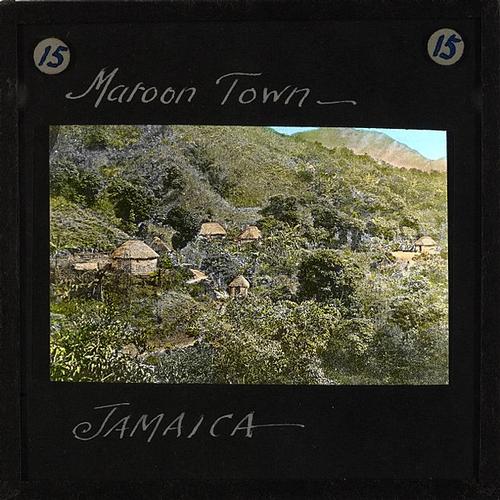 Maroon Village in JamaicaPhoto: Public domain
Maroon Village in JamaicaPhoto: Public domain
In 1760 one of the largest slave rebellions in the history of Jamaica broke out.
The Maroons, once slaves themselves, were even called to the rescue by the government. The Tacky's Rebellion, named after leader Tacky, spread all over the island. At one point, Tacky was shot to death and uprisings broke out across the island that lasted for months.
The American Revolutionary War had major consequences for the Caribbean. In 1781, the British troops surrendered after the Battle of Yorktown and the influence of the British in the Caribbean soon diminished. Only Barbados, Antigua and Jamaica remained British property. In 1782, the French and Spaniards attempted to invade Jamaica, but were defeated in the Battle of the Saints by Admiral George Rodney and his fleet.
The anti-slavery movement and the French Revolution of 1789 also affected Jamaica. The Second Maroon War broke out in 1795. The new governor of Jamaica, Count of Balcarres, declared a state of emergency and sent soldiers inland. However, they were ambushed and many were killed or injured. A few hundred maroons lasted a long time against about 1500 European inspection troops. Eventually, the often invisible insurgents with dogs were tracked down.
After this, the Maroons chose eggs for their money and quickly started peace negotiations.
Slavery is abolished and Jamaica becomes crown colony
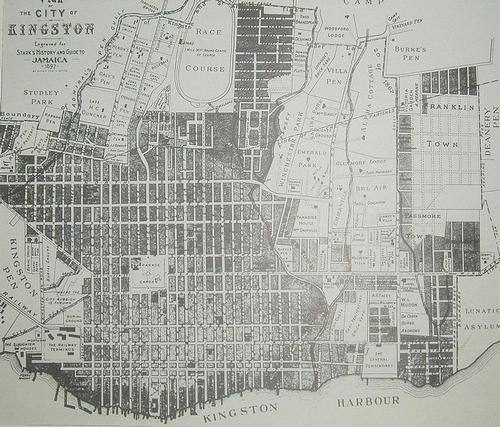 Kingston Jamaica 1897Photo: Public domain
Kingston Jamaica 1897Photo: Public domain
In 1807 the slave trade in the British Commonwealth was banned and in 1838 slavery was completely abolished. The parliament of Jamaica and the plantation owners are strongly opposed to the measures. The advocates of abolition received support from the missionaries of non-conformist churches. In 1831 another slave uprising broke out, with the result that slavery was officially abolished in Jamaica as well. As a result, sugar production fell sharply and the plantations were taken over by Jews and people of mixed descent, at the expense of white planters. Not much changed for the black farmers. The parliament, elected by a small number of white voters, still ruled the service. The conditions of the blacks were further aggravated by crop failures and the consequences of the American Civil War.
In 1862, Edward John Eyre became governor of Jamaica, and he immediately got to work. The black people's condition led to an uprising in 1865, the “Morant Bay Rebellion” led by Paul Boyle and George William Gordon. Approx. 400 people were killed or later executed. One of them was Gordon who was hanged. Eyre's intervention was strongly condemned in England and he was therefore recalled.
Just before that happened, he managed to secure Jamaica's crown colony status. This allowed the governor to continue to exercise his great power. Far-reaching reforms and improvements were made under governors such as Sir John Peter Grant in the late 1800s. Infrastructure was greatly improved, local government and the judiciary were reorganized and the banana trade, which is important to the Jamaican economy, got underway well, to some extent offset the decline of the sugar industry. In 1872, Kingston became the capital of Jamaica and remained so despite some major fires and a terrible 1907 earthquake.
Jamaica independent
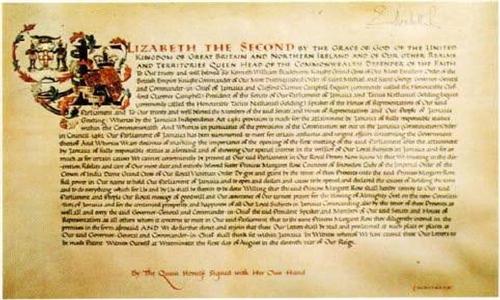 Declaration of independance JamaicaPhoto: Public domain
Declaration of independance JamaicaPhoto: Public domain
As a result of the First World War and the worldwide crisis in the 1930s, this era of prosperity came to an end. Unemployment, banana diseases and rapid population growth caused tensions on the island to rise quickly. Another outburst of insurrection and violence followed in 1938. As a result of this unrest, the first unions and political parties were established.
The main parties became Norman Washington Manley's People's National Party (PNP) and Sir William Alexander Bustamante's Jamaica Labor Party (JLP).
Requirements with regard to salary increases and improvement of the working conditions soon arose. Political reforms were also high on the agenda. This led to a new constitution in 1944, after which the period of Jamaica as a crown colony came to an end. The road to independence had definitely taken.
The two major parties and their leaders disagreed on how to proceed now.
Manley wanted complete independence, Bustamante wanted to benefit from British patronage and economic aid for as long as possible. In the 1950s, both ultimately chose the first alternative: independence.
After constitutional changes in 1953 and 1957, Jamaica gained self-government in 1959 and Britain was only responsible for defense and foreign affairs. In these years, the extraction of bauxite also started and the tourist industry grew. In 1958 the “West Indies Federation” was founded by other British territories in the Caribbean, of which Jamaica was initially also a member. After a referendum among the people of Jamaica, voters elected to secede from Britain.
Agreement was then reached in February 1962 and Independence Day was set for 6 August. Jamaica remained a member of the Commonwealth. The first session of the new parliament took place on August 7, 1962, and the first prime minister became Bustamante of the JLP. Since institutions such as the legal power, the central bank and the civil service were already functioning quite well, the transition to independence went without too many problems.
It was also important that political parties were not divided by race or class, but had different interest groups under their umbrella. In the economic field, two five-year plans were developed that benefited, among others, from bauxite extraction, oil refining, cement production and textile manufacturing. The major problem at this time was the rapid growth of the population resulting in high unemployment.
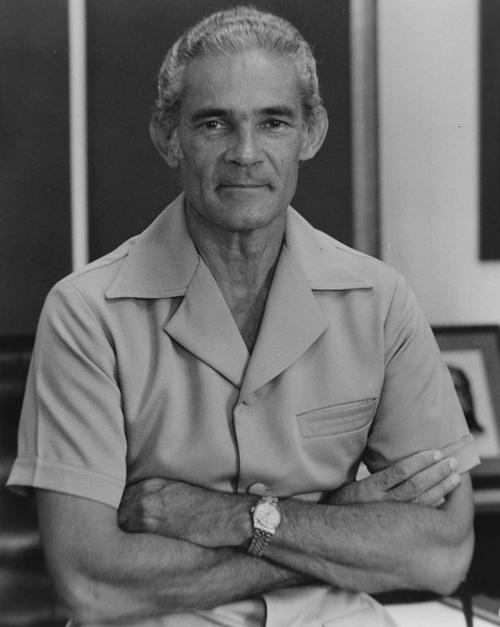 Michael Manley JamaicaPhoto: Public domain
Michael Manley JamaicaPhoto: Public domain
In 1972, the PNP won elections led by Michael Manley. He carried out a number of important reforms; including a minimum wage law and new labor laws regulating workers' rights. Land reforms were also introduced and more houses were built for the poor of Jamaica. Still, Jamaica's economic situation remained poor. The PNP remained in power in 1976 but was unable to resolve economic problems even now. Foreign policy increasingly focused on Russia and Cuba, after which American aid was reduced.
The run-up to the 1976 elections was dominated by violent actions by the supporters of both major parties. This violent rivalry is quite common in Jamaica.
The military usually refrains from violence. Instead, the political parties have their own armed gangs that try to win over voters by force. Allegations of Cuban aid and CIA interference are also rife during the election campaign. Manley declared a state of emergency in 1976 to restore order. This was indeed successful and the PNP won the elections by a large majority. In the same year, Manley announced that Jamaica was heading for bankruptcy and was forced to accept the terms and conditions of the International Monetary Fund in exchange for financial aid. In the meantime, a “brain drain” started. Businesses lost skilled workers and important figures from education and technology left the country.
Government debt rose to $ 150 million in 1979.
The period before the 1980 elections would become the bloodiest in Jamaica's modern history. More than 500 people died. The October 30, 1980 elections were ultimately won by a large majority by Edward Seaga's JLP. When it came to foreign relations, Seaga followed a radically different course from its predecessor Manley. Seaga fully focused on the United States and even closed the Cuban Embassy. Hotels and other state-owned enterprises returned to private ownership. Furthermore, his first priority was to restore the Jamaican economy. This resulted, among other things, in a return of Western investors and in 1981 a small economic growth. Inflation was kept under control, unemployment declined slightly and the budget deficit was corrected. Jamaica's political and economic image improved in the Western world, but this was again undermined by widespread crime and the production of large amounts of marijuana.
After this good start, the fragile economy was hit again. As Jamaica increasingly imported from abroad, the trade deficit increased. In addition, revenues declined as world trade prices for aluminum and bauxite fell. All this resulted in many layoffs, a decline in purchasing power and a sharp rise in the cost of living. On top of all this, Jamaica was hit in 1988 by one of the worst disasters in the island's history; hurricane Gilbert. Three hundred million dollars in damage, a quarter of the population homeless and major damage to agriculture and industry were the consequences.
Since independence, Jamaican politics has been dominated by two parties: the Jamaica Labor Party (JLP), founded by Sir Alexander Bustamente, and Norman Manley's People's National Party (PNP). These two parties alternated regularly during the twentieth century. New parties were not formed until the early 1990s when the JLP became severely divided, resulting in the creation of a new political party in 1995, the National Democratic Movement (NDM). In 2001 another new party was founded, United People's Party (UPP).
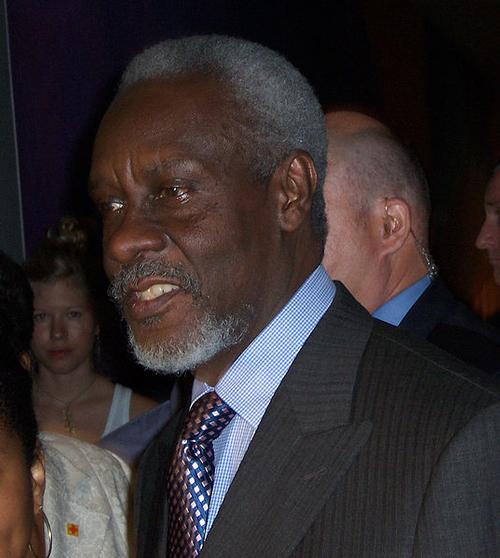 P.J Patterson JamaicaPhoto: Jeffrey O Gustafson CC 3.0 Unported no changes
P.J Patterson JamaicaPhoto: Jeffrey O Gustafson CC 3.0 Unported no changes
P.J. Patterson of the PNP serves as the prime minister for the third consecutive term, while the PNP has won the election for the fourth consecutive time. P.J. Patterson resigned the leadership of the PNP on March 31, 2006. Portia Simpson-Miller won the race for the PNP leadership in February that will secure Jamaica's first female Prime Minister. The PNP is expected to maintain a comfortable majority in parliament despite the fact that in the forthcoming parliamentary elections (by the end of 2007 at the latest) it will suffer from changes in leadership positions within the party. In September 2007, the people decided differently and the Labor Party won the elections. Bruce Golding is the new prime minister. In January 2009, Governor General Kenneth Hall resigns due to health concerns. In February 2009 he is succeeded by Patrick Allen. In May 2010, dozens of people were killed in fighting with a drug boss in Kingstown. On January 5, 2012, Portia Simpson-Millar is elected again. In June 2014, the government announced its intention to drastically reform the country's drug laws. The aim is to decriminalize the use of mariuhana in particular. In February 2015, parliament allowed the possession of small amounts of cannabis for personal purposes. Andrew Holness has been Prime Minister since March 2016. He has the smallest possible majority of just one seat.In the 2021 elections, Holness will remain in power.
Sources
Baker, C. / Jamaica
Lonely Planet
Baker, C. / Jamaica
Kosmos-Z&K
Bayer, M. / Jamaica
Koninklijk Instituut voor de Tropen/Novib
Helm, R. van der / Jamaica
Elmar
Jamaica
Cambium
Wilkins, F./ Jamaica
Chelsea House Publishers
CIA - World Factbook
BBC - Country Profiles
Copyright: Team The World of Info